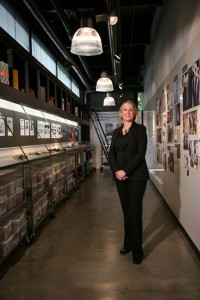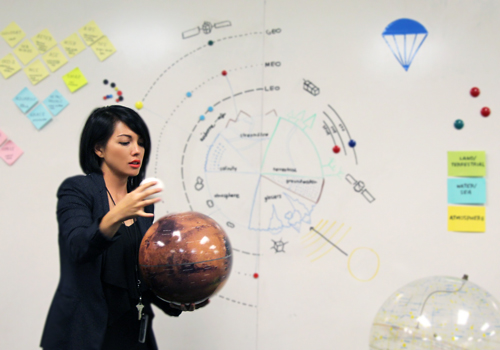Karen Hofmann, recently appointed Department Chair of Product Design, sat down with us to discuss the future of the department.
 As an alumna and educator, Hofmann has developed innovative curriculum—such as DesignStorms, immersive collaborations of students, faculty and professionals from sponsoring companies—and defined new strategies benefiting the entire College. She has served as director of the Color, Materials and Trends Exploration Laboratory (CMTEL) at Hillside Campus since 2006, and has been on the Art Center faculty since 2001. She was recently named one of the Most Admired Educators of 2010 by DesignIntelligence, published by the Design Futures Council.
As an alumna and educator, Hofmann has developed innovative curriculum—such as DesignStorms, immersive collaborations of students, faculty and professionals from sponsoring companies—and defined new strategies benefiting the entire College. She has served as director of the Color, Materials and Trends Exploration Laboratory (CMTEL) at Hillside Campus since 2006, and has been on the Art Center faculty since 2001. She was recently named one of the Most Admired Educators of 2010 by DesignIntelligence, published by the Design Futures Council.
Prior to joining Art Center’s faculty, Hofmann held leadership positions at o2studio and Johnson Controls. She graduated from Art Center in 1997 with a bachelor’s degree in product design and earned a bachelor’s degree in psychology from California State University, Northridge. She served as Acting Chair of the department from 2008 to 2009.
Dotted Line: What do you bring to the Product Design Department as Chair?
Karen Hofmann: I am deeply committed to upholding the great legacy and strengths of the department. I feel a great sense of responsibility to prepare young designers as creative citizens of the 21st century, and will evolve the program to best prepare our students for meaningful careers that positively impact the world.
DL: What does the future hold for product design in general?
KH: It has gone beyond just producing objects. Today product design is about applying the design process to any number of problems in the world, from social impact challenges to redesigning organizations. The term “design thinking” is very in vogue right now—product designers have led these collaborative and iterative processes for years. Product designers are responsible for bringing non-designers along in the creative process as they identify and solve problems.
Continue reading →



 Just in time for Memorial Day, an interesting article at
Just in time for Memorial Day, an interesting article at  A very interesting article at
A very interesting article at 
 Bet you haven’t heard of this one before. Professor Peter Robbie’s design thinking class at Dartmouth is using a novel approach to teaching design thinking: improv comedy.
Bet you haven’t heard of this one before. Professor Peter Robbie’s design thinking class at Dartmouth is using a novel approach to teaching design thinking: improv comedy. UK design firm
UK design firm 

 The idea of design thinking is one that has been up for a ton of discussion recently. But what exactly is it?
The idea of design thinking is one that has been up for a ton of discussion recently. But what exactly is it?